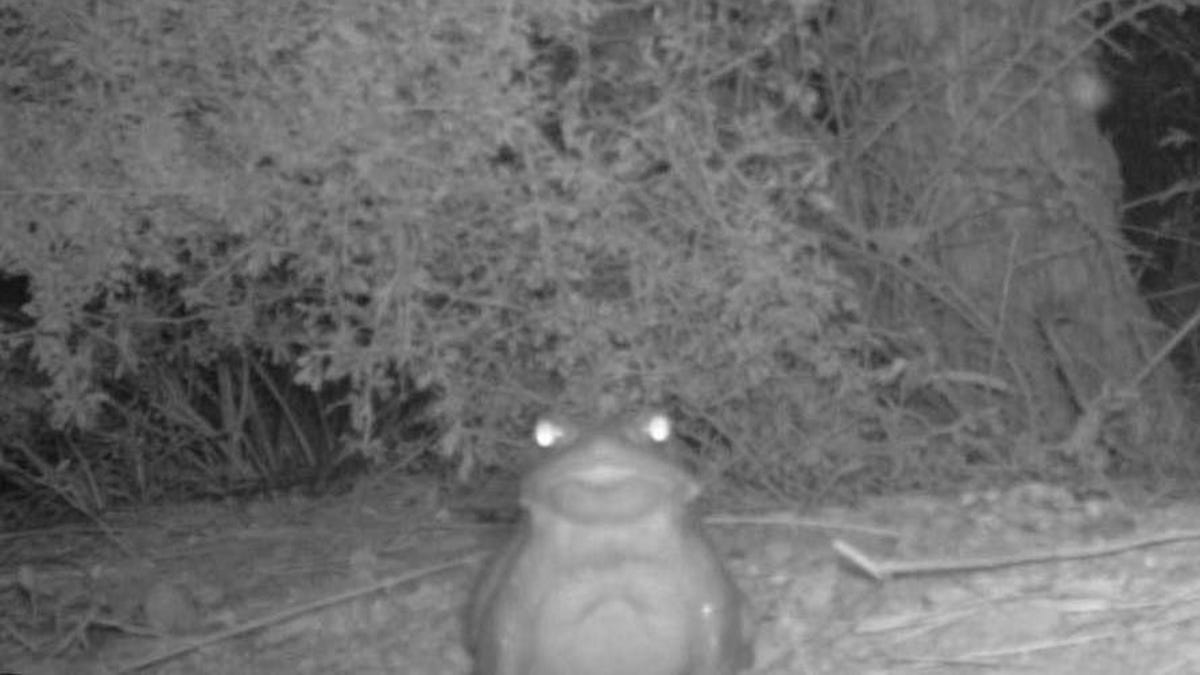Don't Lick Toxic 'Hypnotoads,' National Park Service Cautions
The Sonoran desert toad is a no-lick zone.
File it under "I can't believe this has to be said." The US National Park Service dropped some humorous but still serious advice on Twitter this week concerning the Sonoran desert toad, which lives in parts of California, Arizona, New Mexico and Mexico.
TLDR: Don't lick the toad.
The NPS kicked off the thread Tuesday with the eye-catching exclamation "All glory to the hypnotoad!" along with a trail camera image of a toad that looks like it has glowing eyes. The photo comes from the Organ Pipe Cactus National Monument in Arizona, a site managed by the NPS.
ALL GLORY TO THE HYPNOTOAD!!! 🌀🌀
— National Park Service (@NatlParkService) November 1, 2022
The Sonoran desert toad (Bufo alvarius) is one of the largest toads found in North America, measuring nearly 7 inches (18 cm). Will it hypnotize you with its large oscillating multicolored eyes? That’s just silly….MUST SHARE TOAD FACTS!!! pic.twitter.com/78GIcco7rm
"Hypnotoad" is a reference to a critter from the animated show Futurama. The toad is known for hypnotizing other characters on the show and became a meme star.
"YOU WILL BUY THE EXTENDED WARRANTY!" the NPS joked in another tweet in the thread.
You can look this Sonoran desert toad in the eye.
The Sonoran desert toad is a real-life animal. The NPS describes its call as a "weak, low-pitched toot, lasting less than a second." That's some fun trivia, but we're here for what makes this large toad unlickable.
It has toxin-secreting glands that can sicken other animals, including humans, that come in contact with it. The toxin also has a reputation as a hallucinogen.
"As we say with most things you come across in a national park, whether it be a banana slug, unfamiliar mushroom, or a large toad with glowing eyes in the dead of night, please refrain from licking," NPS noted in another tweet in its delightful thread.
It should be pretty easy for humans to avoid the toad's poison, but the toads can present a hazard to dogs that don't know better. The Arizona-Sonora Desert Museum lists symptoms of toad poisoning in dogs as "excessive salivation, irregular heartbeat and gait, and pawing at the mouth." The museum recommends using a garden hose to rinse the dog's mouth from back to front and to consult a veterinarian. The toxin can paralyze or kill a dog.
Sonoran desert toads, if you come across one, are a look-but-don't-touch animal. If you want a totally safe, but still trippy toad experience, then check out the 31st century's most popular television series, Everybody Loves Hypnotoad.


